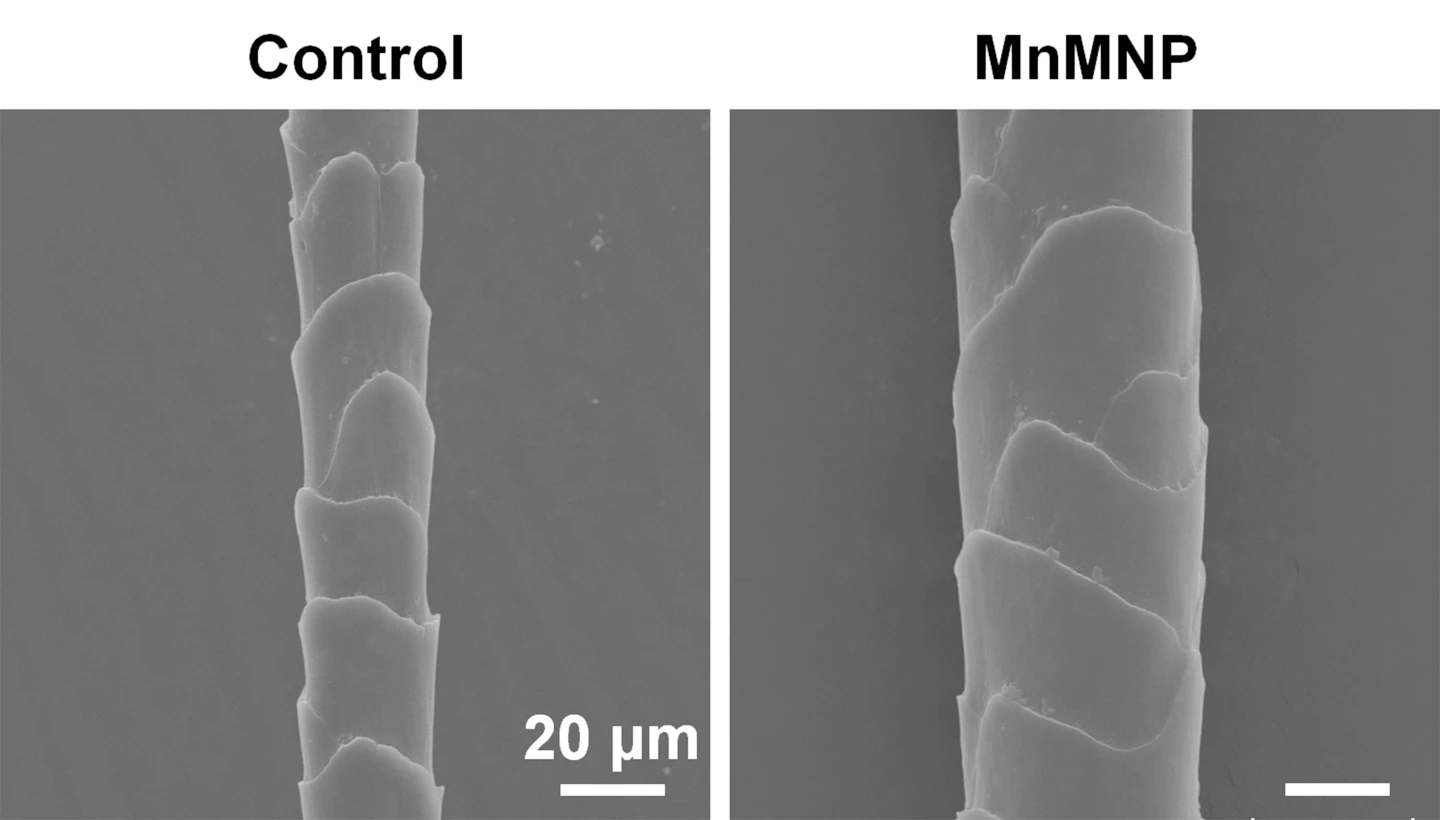Scientists in China researching advanced treatments for a common form of hair loss have found success through a novel microneedle patch, which was used to regenerate hair in bald mice. The device works by tackling oxidative stress that impacts on follicles, with the result being thicker and denser hair coverage than what is possible through commonly used treatments.
The research focuses on the most common type of hair loss, androgenetic alopecia. Oxidative stress is thought to be a key player in this condition, which can be driven by a surplus of reactive oxygen species on the scalp that cause damage to cells responsible for follicle growth. Last year, scientists demonstrated another microneedle patch loaded with nanoparticles to reduce oxidative stress that also promoted new hair growth in mouse models of androgenetic alopecia.
That microneedle worked through the release of what scientists call nanozymes, which are designed to mimic the behavior of certain enzymes in the body. The authors of the new study say the nanozymes designed so far have room for improvement when it comes to removing some reactive oxygen species to promote hair growth, and with the help of machine learning, they believe they’ve taken the technology a step forward.
Machine learning was used to efficiently screen 91 different nanozyme candidates and predict which compound would behave most like one called superoxide dismutase, which helps to naturally neutralize reactive oxygen species in the body. The winning manganese thiophosphite compound was integrated into nanosheets and tested against human skin fibroblast cells, where it harmlessly lowered levels of reactive oxygen species.
Next, the scientists created a microneedle patch featuring the compounds, and designed it to diffuse deep into the skin to remove excess reactive oxygen species. These were applied to mouse models of androgenetic alopecia, and within 13 days the animals exhibited hair regeneration, with strands appearing thicker and more dense than in mice treated with either testosterone or minoxidil, commonly known as Rogaine.

While the research augers well for the ongoing development of next-generation treatments for hair loss, the scientists also see it as a demonstration of how machine learning can accelerate the development of nanozyme therapeutics, a field that goes beyond hair loss to include applications like wound treatment and tumor therapy.
The research was published in the journal Nano Letters.
Source: American Chemical Society





